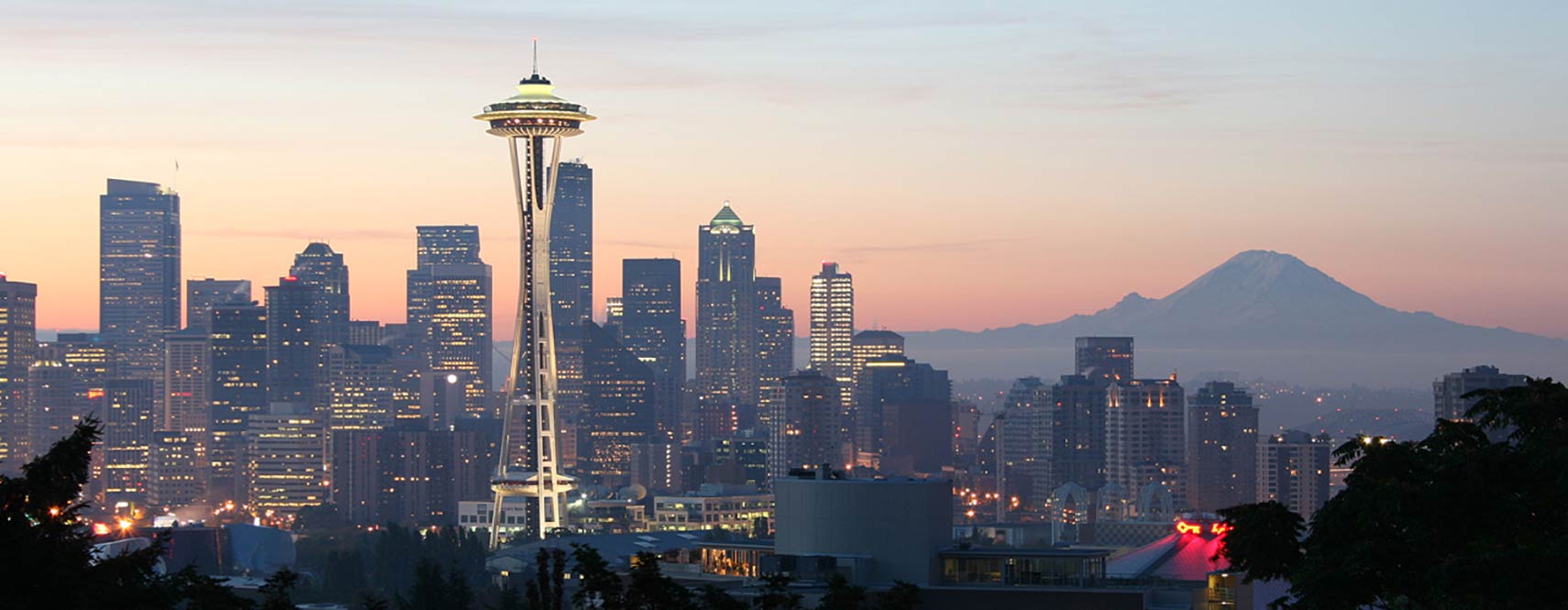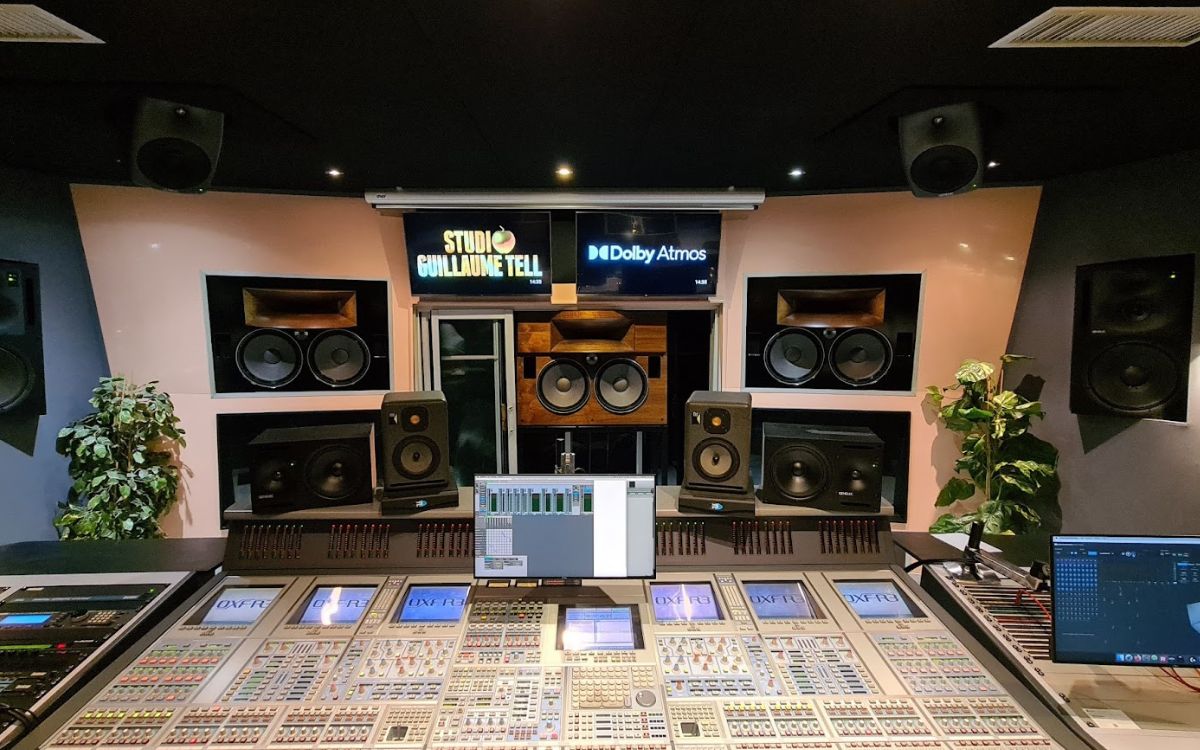Home>Production & Technology>Sound>What Was The Loudest Sound Ever


Sound
What Was The Loudest Sound Ever
Published: December 17, 2023
Discover the loudest sound ever recorded in history and learn about the incredible power of sound. Explore the science behind this phenomenon and be amazed!
(Many of the links in this article redirect to a specific reviewed product. Your purchase of these products through affiliate links helps to generate commission for AudioLover.com, at no extra cost. Learn more)
Table of Contents
Introduction
Welcome to the fascinating world of sound, where vibrations in the air create the symphony of our lives. From the pleasant melodies of music to the alarming roar of thunder, sound is an integral part of our sensory experience. While most sounds we encounter are within a comfortable range of volume, there are instances where sound reaches extreme levels, pushing the boundaries of our perception.
Sound is defined as the mechanical wave that travels through a medium, such as air or water, and reaches our ears, allowing us to perceive it. It is caused by the rapid oscillation or vibration of particles. In scientific terms, sound is measured in units of decibels (dB) which quantify the intensity or level of sound pressure.
Sound intensity is measured using specialized instruments like sound level meters. The sound level is logarithmically scaled, with quiet sounds falling in the lower dB range and loud sounds in the higher dB range. The human ear can detect a wide range of sounds, with the threshold of hearing at around 0 dB and the threshold of pain at approximately 120 dB.
Definition of Sound
Sound is a form of energy that travels through a medium, such as air, water, or solids, in the form of waves. These waves are created by the vibration or oscillation of particles in the medium. When an object vibrates, it causes the surrounding particles to also vibrate, transferring the energy from the source to our ears.
The fundamental properties of sound include frequency, amplitude, and wavelength. Frequency refers to the number of vibrations or cycles per second and is measured in hertz (Hz). The higher the frequency, the higher the pitch of the sound. Amplitude, on the other hand, relates to the magnitude or strength of the sound wave. It is measured in decibels (dB) and determines the perceived loudness of the sound. Lastly, wavelength represents the distance between two consecutive points in a sound wave and is inversely related to frequency.
Sound waves can travel through different mediums, but they require a medium to propagate. In outer space, where there is a vacuum, sound cannot travel as there are no particles to vibrate. However, in our everyday lives, sound waves primarily travel through the air. They can also travel through other mediums, such as water or solids, but at different speeds and with some variations in their characteristics.
Sound plays a crucial role in our lives, both in communication and in experiencing the world around us. It enables us to hear and interpret various sounds, including speech, music, and the sounds of nature. It also serves as an essential warning system, alerting us to potential dangers or signaling important events.
Now that we have a basic understanding of sound, let’s explore how scientists measure its intensity and delve into some historical examples of extremely loud sounds that have left an indelible mark on history.
Scientific Measurement of Sound Intensity
In order to accurately quantify the intensity of sound, scientists use a unit called the decibel (dB). The decibel scale is logarithmic, meaning that an increase of 10 dB represents a tenfold increase in sound intensity. This scale allows us to measure a wide range of sound levels, from the faintest whisper to the loudest explosion.
Sound level meters are the primary tools used to measure sound intensity. They consist of a microphone that detects sound waves, an amplifier that increases the signal from the microphone, and a display unit that shows the measured sound level in decibels.
When measuring sound intensity, it is important to consider the reference level against which the sound is compared. The most commonly used reference level is 0 dB, which corresponds to the threshold of human hearing. Sound levels below 0 dB are considered quieter, while those above 0 dB are perceived as louder.
It’s important to note that the decibel scale is not linear. A sound level of 60 dB is not twice as loud as a sound level of 30 dB. Instead, every increase of 10 dB represents a sound level that is approximately 10 times louder than the previous level. For example, a sound level of 70 dB is about 10 times louder than a sound level of 60 dB.
In addition to measuring the overall sound intensity, scientists also analyze the frequency content of a sound using a technique called spectral analysis. This allows them to determine the distribution of sound energy across different frequency bands. Sounds with different frequency distributions can have different perceived qualities, such as being high-pitched or low-pitched.
By understanding the scientific measurement of sound intensity, we can now explore historical examples of extraordinarily loud sounds that have captured the imagination of people worldwide.
Historical Examples of Extremely Loud Sounds
Throughout history, there have been several instances where sounds of unprecedented magnitude have reverberated across the Earth, leaving a lasting impact on the collective memory of humanity. These events serve as reminders of the raw power and awe-inspiring force that sound can possess.
One of the most famous examples is the eruption of the Krakatoa volcano in 1883. Located in Indonesia, the explosion of Krakatoa generated sound waves that traveled around the globe not once, but multiple times. The sound was heard over 3,000 kilometers away, and the pressure waves created by the eruption were recorded by barometers in various parts of the world. The estimated sound level reached an astonishing 180 dB, equivalent to standing next to a rocket during liftoff.
Another notable event occurred in 1908, known as the Tunguska Event. In a remote region of Siberia, a massive explosion flattened trees over an area of about 2,000 square kilometers. Although there were no recorded human casualties, the sound of the blast was heard hundreds of kilometers away. Scientists estimate that the explosion released energy equivalent to 10 to 15 megatons of TNT, creating a sound level that likely exceeded 300 dB.
Nuclear bomb explosions have also generated some of the loudest sounds in history. The detonation of the Tsar Bomba, the most powerful nuclear bomb ever detonated, produced a shockwave that shattered windows over 500 kilometers away. The sound of the explosion was heard over 1,000 kilometers away, with estimated sound levels exceeding 260 dB.
In a more contemporary example, the launch of space shuttles has produced thunderous sonic booms. These ear-shattering booms occur when an aircraft or spacecraft travels faster than the speed of sound, creating a pressure wave. The Space Shuttle Atlantis, for instance, produced a sound level of approximately 214 dB during its re-entry into the Earth’s atmosphere.
These historical examples of extremely loud sounds serve as reminders of the immense power that sound can possess. They demonstrate the reach and impact of sound waves, and the awe-inspiring moments when sound transcends the boundaries of our everyday experience.
The Krakatoa Eruption
In the summer of 1883, the world witnessed one of the most cataclysmic volcanic eruptions in recorded history – the eruption of the Krakatoa volcano, located in the Sunda Strait between the islands of Java and Sumatra in Indonesia. The eruption of Krakatoa was a truly monumental event, not only in terms of its destructive power but also in terms of the astronomical sound it produced.
On August 26, 1883, the volcano erupted with an unimaginable force, releasing a volley of explosions that sent plumes of ash, rock, and gas high into the atmosphere. The initial explosion was estimated to have been equivalent to 200 megatons of TNT, making it one of the most powerful volcanic eruptions in history.
The sound generated by the eruption was nothing short of astounding. The shockwave from the explosions traveled around the world not once, but multiple times, creating an eerie symphony that reverberated across continents. The sound was reported to have been heard as far away as Perth, Australia, approximately 3,000 kilometers from Krakatoa. People in locations as distant as Sri Lanka and Rodriguez Island in the Indian Ocean also reported hearing the loud booms and rumblings.
The intensity of the sound can be better understood by considering the decibel scale. It is estimated that the sound levels from the Krakatoa eruption reached an astonishing 180 dB at the source. To put this into perspective, an explosion that close would be similar to standing next to a powerful rocket during liftoff.
The sheer magnitude of the Krakatoa eruption had devastating consequences. The explosions triggered a series of tsunamis, with waves reaching heights of up to 40 meters and causing widespread destruction along the coasts of Java and Sumatra. The volcanic ash and debris that were ejected into the atmosphere had a significant impact on global climate, causing colorful sunsets and even lowering global temperatures for several years.
The eruption of Krakatoa was a testament to the sheer power and force that volcanoes can unleash. Beyond the physical destruction and environmental impact, the sound produced during the eruption serves as a haunting reminder of the immense energy contained within our planet.
The Tunguska Event
In the early morning of June 30, 1908, a mysterious explosion rocked the remote region of Tunguska in Siberia, Russia. The event, now known as the Tunguska Event, remains one of the most enigmatic and awe-inspiring cosmic occurrences in history.
The Tunguska Event is believed to have been caused by the airburst of a large meteoroid or comet in Earth’s atmosphere. Although there were no human casualties or settlements in the immediate vicinity, the blast flattened approximately 80 million trees over an area of about 2,000 square kilometers. The force of the explosion is estimated to have been equivalent to 10 to 15 megatons of TNT, thousands of times more powerful than the atomic bomb dropped on Hiroshima.
One of the most intriguing aspects of the Tunguska Event is the immense sound it generated. Witnesses reported hearing a series of deafening sounds that accompanied the explosion. These sounds were heard up to hundreds of kilometers away, with reports of people being knocked off their feet by the powerful shockwave generated by the blast. Some accounts even describe the sound resembling a continuous thunder-like rumble.
Estimating the exact sound level of the Tunguska explosion is challenging due to the lack of precise instruments at the time. However, scientists believe that the sound produced would have been exceptionally loud—possibly exceeding 300 decibels, a level far beyond the threshold of pain for human hearing.
The Tunguska Event had far-reaching consequences beyond the immediate devastation. The explosion released a massive amount of energy, sending shockwaves that rippled through the Earth’s atmosphere. These shockwaves were detected as far away as the United Kingdom and registered on barographs worldwide.
The Tunguska Event has sparked countless scientific investigations, with researchers attempting to unravel the mysteries surrounding the cosmic collision. Today, it serves as a reminder of the potential impact of celestial bodies on our planet and the awe-inspiring power that can accompany such events.
Nuclear Bomb Explosions
Nuclear bomb explosions represent some of the most powerful and devastating man-made events in history. These explosions release an immense amount of energy, resulting in a destructive force that is both awe-inspiring and chilling. Alongside the destruction caused by the blasts, these events also generate incredibly loud and ear-shattering sounds.
During a nuclear explosion, an enormous amount of energy is released in a fraction of a second. The explosion is accompanied by a shockwave that propagates through the air, creating a powerful and intense sound wave. The intensity of this sound wave is dependent on several factors, including the size and yield of the bomb, as well as the distance from the epicenter of the explosion.
The sound levels generated by nuclear bomb explosions are staggering. The detonation of the Tsar Bomba, the largest nuclear bomb ever detonated, produced a shockwave that shattered windows over 500 kilometers away. The sound of the explosion was heard over 1,000 kilometers away, with estimated sound levels exceeding 260 decibels. Such levels are well beyond the threshold of pain for human hearing and can cause significant damage to the eardrums of anyone in close proximity.
In addition to the immediate effects of the explosion, nuclear bomb detonations can also create a phenomenon known as the “double bang.” This occurs when the initial nuclear detonation creates a fireball, which then rapidly expands and cools, causing a secondary explosion. The second explosion produces another shockwave and accompanying sound, contributing to the overall intensity and magnitude of the auditory experience.
The sound generated by nuclear bomb explosions extends far beyond the immediate area of the blast. The sound waves can travel for long distances, reaching communities far removed from the epicenter. The effects of these explosions are not limited to sound alone, as they also cause devastating physical destruction, radiation, and long-lasting psychological trauma.
While the sound produced by nuclear bomb explosions is terrifying and haunting, it serves as a reminder of the devastating potential of these weapons. It underscores the need for peace and the ongoing efforts to prevent the use and proliferation of such destructive forces in our world.
Space Shuttle Launches
The launch of a space shuttle is a monumental event that captivates the world’s attention. These extraordinary missions mark the beginning of a journey into the great unknown, pushing the boundaries of human exploration and scientific discovery. Alongside the visual spectacle of a space shuttle launch, the auditory experience is equally awe-inspiring, as these launches produce thunderous sonic booms.
When a space shuttle launches, it accelerates through Earth’s atmosphere at incredible speeds, breaking the sound barrier. As the shuttle surpasses the speed of sound, it creates a rapid displacement of air molecules, resulting in shockwaves that propagate through the air. These shockwaves manifest as sonic booms, producing a powerful and distinctive sound.
The sound of a sonic boom is often described as a loud, sharp thunderclap or explosion. It can be heard as a single concussion or as a series of booms, depending on the distance and position of the observer relative to the shuttle. The intensity of the sonic booms can reach levels exceeding 200 decibels, making them one of the loudest sounds produced by human activity.
During a space shuttle launch, sonic booms are typically generated twice—once during the shuttle’s ascent through the lower atmosphere and again during its return and descent. These booms can be heard over a large area, potentially spanning several kilometers.
The sonic booms produced by space shuttles can have significant effects on the environment and the surrounding communities. They can cause vibrations in structures and even break windows, depending on the proximity to the launch site. To minimize the impact of sonic booms, space agencies work diligently to design and launch shuttles in a way that mitigates the potential for damage.
For those fortunate enough to witness a space shuttle launch firsthand, the experience is unforgettable. The combination of the visual spectacle and the thunderous roar of the sonic booms creates a multisensory experience that fills observers with a sense of wonder, awe, and pride in humanity’s achievements.
Space shuttle launches symbolize the indomitable spirit of exploration and the pursuit of knowledge, reminding us of the remarkable feats that can be achieved when humans dare to reach for the stars.
Sonic Booms
Sonic booms are a fascinating and extraordinary phenomenon that occur when an object moves through the air faster than the speed of sound. They are characterized by a sudden, sharp, and thunderous sound, often described as an explosive clap or rumble, that can be felt and heard over a wide area.
When an object, such as an aircraft or spacecraft, exceeds the speed of sound (approximately 1,225 kilometers per hour or 761 miles per hour at sea level), it creates a shockwave known as a bow wave. This shockwave trails behind the object and forms a cone-shaped region of compressed air, with the tip of the cone being the point of the object. As the object continues to travel, the compressed air molecules in the cone become highly concentrated.
When the object finally passes, these highly concentrated air molecules rapidly disperse, creating an intense burst of pressure. This sudden change in pressure is what produces the characteristic sonic boom, which is actually a series of shockwaves that reach the ground and are heard as a distinct sound by those in its path.
One crucial aspect of sonic booms is that they occur at a specific moment in time, as the object crosses the threshold of supersonic speed. As such, the sonic boom is typically heard as a single sharp sound, lasting for just a fraction of a second.
The intensity and duration of a sonic boom depend on various factors, including the speed and size of the object, its altitude, and the atmospheric conditions. Typically, the closer an observer is to the path of the object, the louder and more pronounced the sonic boom will be.
Sonic booms have both positive and negative implications. On the positive side, they represent significant technological achievements, as objects capable of producing sonic booms are traveling at tremendous speeds. Additionally, they serve as a powerful reminder of the principles of physics and the effects of compressible air molecules.
On the other hand, sonic booms can be disruptive and potentially damaging. They can cause vibrations, rattling windows, and even structural damage to buildings if the object generating the boom is in close proximity to populated areas. In some cases, the impact of sonic booms has led to regulations and restrictions on supersonic flight over land to minimize disturbances.
Despite their potential drawbacks, sonic booms remain an awe-inspiring phenomenon that captures the imagination and reminds us of the extraordinary forces at play in our atmosphere. The study and understanding of sonic booms continue to contribute to advancements in aerodynamics and the exploration of supersonic travel.
Conclusion
The world of sound is a fascinating realm that encompasses a wide range of experiences. From the gentle rustling of leaves to the thunderous roar of volcanic eruptions and nuclear bomb explosions, sound has the power to captivate and evoke a myriad of emotions.
In this article, we have explored the definition of sound and the scientific measurement of its intensity. We delved into historical examples of extremely loud sounds, such as the Krakatoa eruption and the Tunguska Event, which left indelible marks on our planet and in the annals of history. We also examined the awe-inspiring sonic booms generated by space shuttle launches and the physics behind them.
Throughout our exploration, we have witnessed the incredible power and magnitude that sound can reach. From natural catastrophes to human-made achievements, sound has the ability to shake the earth, shatter windows, and create a symphony of awe in its wake.
It is important to recognize the impact of sound and the need to balance the pursuit of knowledge and technological advancements with the preservation of our environment and well-being. As we continue to explore and push the boundaries of exploration, it is crucial to mitigate the disruptive aspects of extremely loud sounds, ensuring that our advances are sustainable and considerate of both humans and the natural world.
In conclusion, the world of sound is a testament to the beauty and power found in nature and human ingenuity. From the gentlest whisper to the earth-shattering boom, sound shapes our perceptions, emotions, and understanding of the world around us. Let us appreciate and respect the incredible diversity and complexity of sound as it continues to play a vital role in our lives.











